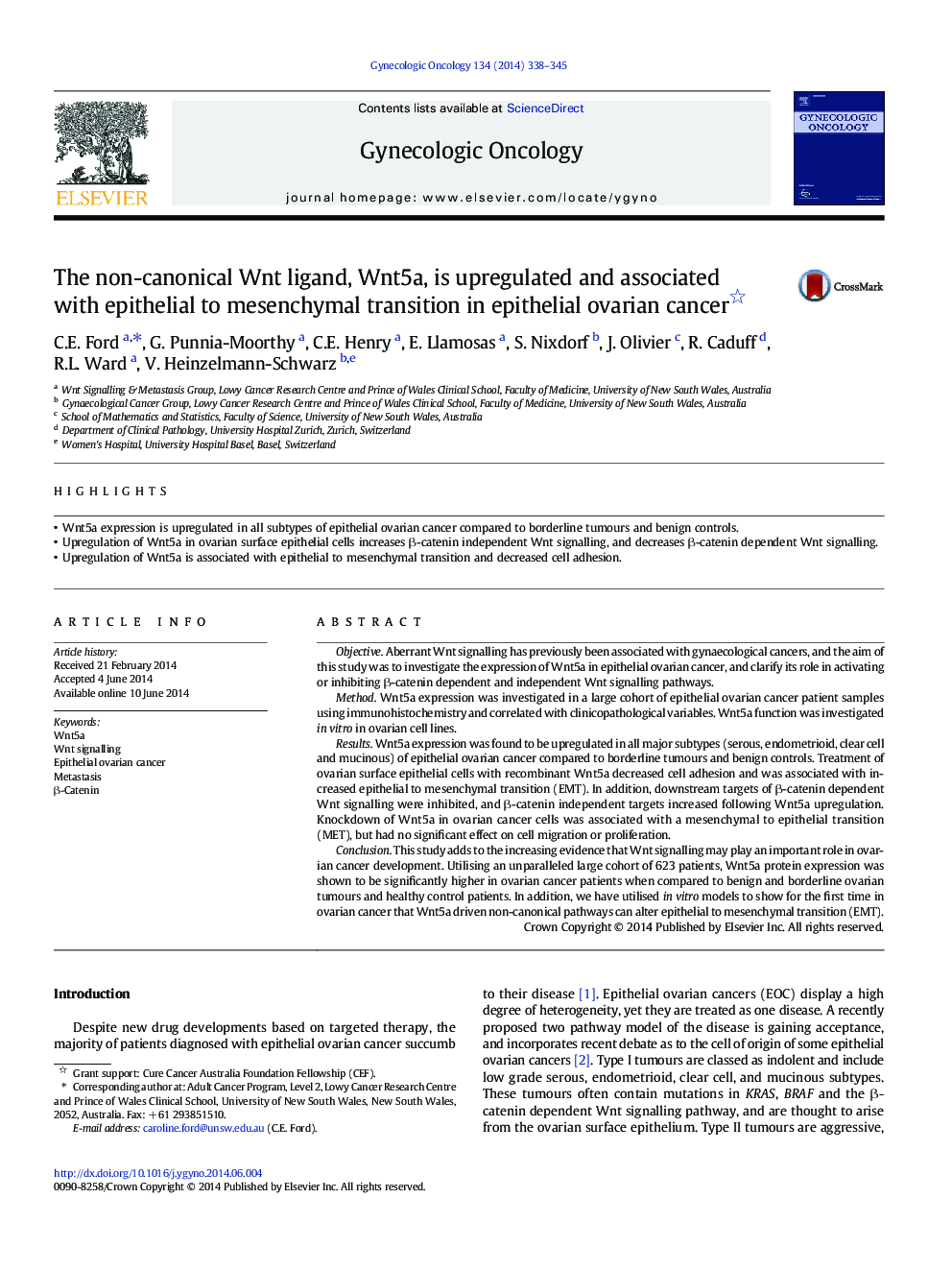| Article ID | Journal | Published Year | Pages | File Type |
|---|---|---|---|---|
| 3946709 | Gynecologic Oncology | 2014 | 8 Pages |
•Wnt5a expression is upregulated in all subtypes of epithelial ovarian cancer compared to borderline tumours and benign controls.•Upregulation of Wnt5a in ovarian surface epithelial cells increases β-catenin independent Wnt signalling, and decreases β-catenin dependent Wnt signalling.•Upregulation of Wnt5a is associated with epithelial to mesenchymal transition and decreased cell adhesion.
ObjectiveAberrant Wnt signalling has previously been associated with gynaecological cancers, and the aim of this study was to investigate the expression of Wnt5a in epithelial ovarian cancer, and clarify its role in activating or inhibiting β-catenin dependent and independent Wnt signalling pathways.MethodWnt5a expression was investigated in a large cohort of epithelial ovarian cancer patient samples using immunohistochemistry and correlated with clinicopathological variables. Wnt5a function was investigated in vitro in ovarian cell lines.ResultsWnt5a expression was found to be upregulated in all major subtypes (serous, endometrioid, clear cell and mucinous) of epithelial ovarian cancer compared to borderline tumours and benign controls. Treatment of ovarian surface epithelial cells with recombinant Wnt5a decreased cell adhesion and was associated with increased epithelial to mesenchymal transition (EMT). In addition, downstream targets of β-catenin dependent Wnt signalling were inhibited, and β-catenin independent targets increased following Wnt5a upregulation. Knockdown of Wnt5a in ovarian cancer cells was associated with a mesenchymal to epithelial transition (MET), but had no significant effect on cell migration or proliferation.ConclusionThis study adds to the increasing evidence that Wnt signalling may play an important role in ovarian cancer development. Utilising an unparalleled large cohort of 623 patients, Wnt5a protein expression was shown to be significantly higher in ovarian cancer patients when compared to benign and borderline ovarian tumours and healthy control patients. In addition, we have utilised in vitro models to show for the first time in ovarian cancer that Wnt5a driven non-canonical pathways can alter epithelial to mesenchymal transition (EMT).
